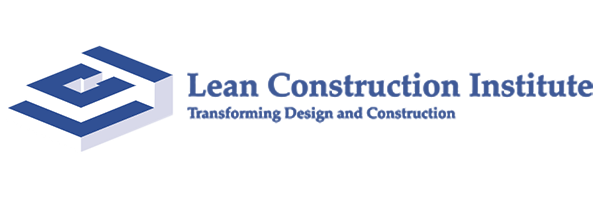The Business Case For Lean Construction... There Is A Better Way!
The Business Case For Lean Construction... There Is A Better Way!
How do you increase speed to market and/ or improve the return on investment of your capital projects? The Lean Construction Institute sponsored two separate research studies, conducted by Dodge Data & Analytics and the University of Minnesota, to explore how and why projects excel. Empirical evidence now shows that projects with high Lean intensity are three times more likely to complete ahead of schedule and two times more likely to complete under budget.

HOW DID PROJECTS PERFORM?
HOW DID PROJECTS PERFORM?
HOW DID PROJECTS PERFORM?
Dodge benchmarked 162 projects identified by owners as best or typical vs. schedule and budget performance (what owners cited as most valuable to them). The sample represents projects using various delivery methods and contract types across the United States for owners completing more than five capital projects over three years

Dodge also inquired about the use of 27 project management methods on each project. The research found the following methods with the biggest gap between use on best and typical projects.


WHY DID PROJECTS EXCEL?
WHY DID PROJECTS EXCEL?
WHY DID PROJECTS EXCEL?
Of the best projects Dodge found a statistically significant correlation between high Lean intensity projects and likelihood to complete ahead of schedule or under budget. Lean intensity refers to the extent a project used the management methods studied, particularly those that are recognized as the most effective.


MYTHS ABOUT LEAN
MYTHS ABOUT LEAN
MYTHS ABOUT LEAN
The University of Minnesota "busted" some industry myths through ten in-depth case studies in partnership with the Integrated Project Delivery Alliance. Regardless of project type, regulations or Lean/IPD experience the research found that teams are leveraging Lean and IPD to foster and cultivate "project first" behaviors to deliver "A team results" with every team!
TOP MYTHS BUSTED
TOP MYTHS BUSTED
TOP MYTHS BUSTED
1. Set Targets: Select Lean methods that align with improvement needs of your practice and set measurable goals
2. Build the Team: Identify Lean champions in your practice and on project teams to validate targets for the project and unify the team
3. Learn as a Team: Provide Lean training, ongoing coaching and empower teams to learn by doing
4. Support the Team: Celebrate performance and process improvements and foster an environment of continuous improvement

SO HOW DO I START?
SO HOW DO I START?
SO HOW DO I START?
Based on the research follow these four key steps:
1. Set Targets: Define owner’s business case and goals
2. Build the Team: Use a best value selection process to contract key stakeholders prior to or during concept design to validate targets and unify the team.
3. Learn as a Team: Provide training and ongoing coaching for the team to increase adoption of Lean methods.
4. Support the Team: Contracts should support (not thwart) a collaborative team culture and adoption of Lean methods.

WHAT DOES THIS MEAN FOR ME?
WHAT DOES THIS MEAN FOR ME?
WHAT DOES THIS MEAN FOR ME?
While the research is focused on the project business case; the benefits extend to the individuals and businesses of both owners and service providers for the project including:
- - Reduced costs and improved profitability
- - Increased employee engagement
- - Better work/life balance

HOW DO I LEARN MORE?
HOW DO I LEARN MORE?
HOW DO I LEARN MORE?
For more information about the research, connect with the Lean community in your area and to advance your own Lean journey, please visit: WWW.LEANCONSTRUCTION.ORG

